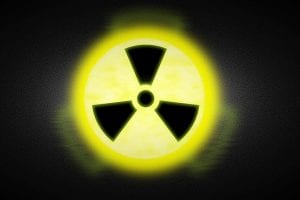 With President Trump’s increasingly provocative tweets directed at North Korea and Kim Jong-un, people have becoming increasingly concerned with the seemingly unquestioned power the president has to order nuclear strikes. SMU Professor of Law Anthony Colangelo was no different. He drafted a paper on why there is a duty to disobey illegal nuclear strike orders, believing that in most scenarios, but not all, the use of such weapons would constitute a war crime.
With President Trump’s increasingly provocative tweets directed at North Korea and Kim Jong-un, people have becoming increasingly concerned with the seemingly unquestioned power the president has to order nuclear strikes. SMU Professor of Law Anthony Colangelo was no different. He drafted a paper on why there is a duty to disobey illegal nuclear strike orders, believing that in most scenarios, but not all, the use of such weapons would constitute a war crime.
North Korean Leader Kim Jong Un just stated that the “Nuclear Button is on his desk at all times.” Will someone from his depleted and food starved regime please inform him that I too have a Nuclear Button, but it is a much bigger & more powerful one than his, and my Button works!
— Donald J. Trump (@realDonaldTrump) January 3, 2018
Colangelo presented his paper at the Tower Center Feb. 12. The thesis of his paper is that if the same military objective can be obtained with conventional weapons, then it is illegal under the Additional Protocols to the Geneva Conventions to use nuclear weapons. This means that there is a duty to disobey an illegal nuclear strike order. Colangelo lists five factors that distinguish nuclear weapons from conventional weapons:
- The blast power of nuclear weapons far outstrips that of conventional weapons.
- Nuclear weapons release radiation that causes health defects for survivors and their children.
- Humanitarian assistance at the blast scene is virtually impossible, increasing suffering.
- The damage to the environment could lead to widespread famine.
- Nuclear weapons cause long-term multi-generational psychological trauma.
Manifestly illegal
Colangelo emphasized that the purpose of his paper is not to call into question the military chain of command. The duty to disobey is already something military officers are sworn to honor, and Colangelo argues that it should be extended to nuclear strike orders in order to lay the groundwork for holding people accountable. The Nuremberg Charter rejected the defense that a person cannot be held accountable for an illegal act if he or she was following superior orders, thus making clear the duty to disobey illegal orders.
However, it’s important to remember that in order to be charged with a war crime, the act needs to be manifestly illegal, or clearly illegal. This is the standard that was used to charge Nazis during the Nuremberg trials. “I use the grotesque example of shooting a baby in the head to explain this,” Colangelo said. This standard means there should be no question or hesitation regarding the illegality of the order.
Where responsibility falls
Who should be held accountable for the crime? Diana Newton, the program moderator and senior fellow at the Tower Center, brought up the point that low-level officers receiving the strike order might only be given coordinates and no other information before initiating the actual launch. Colangelo said that if a person is not aware of the circumstances then he or she cannot be held accountable, but he also said that with so much at stake with a nuclear strike, all levels of people involved should be fully aware of the situation and the potential consequences.
However, Colangelo argued that the people designing the strike for the president, the U.S. Strategic Command, should be the ones held responsible. When the president orders a strike, they are the ones who will then design that strike, meaning that they will have all of the information to determine whether or not the order is legal.
Potential scenarios for a legal nuclear strike
Colangelo acknowledged that there are scenarios he could possibly understand using a nuclear weapon. For example, if it were a smart small-yield weapon targeted at enemy forces at sea, or targeted at troops in a desert with no civilians in the area. He also said that the use of the weapons would always be legal as a matter of self defense; self defense is a protected right in the UN Charter Article 51. Pre-emptive strikes do not qualify as self defense.
For further reading, Colangelo published his argument in an op-ed for the Los Angeles Times.